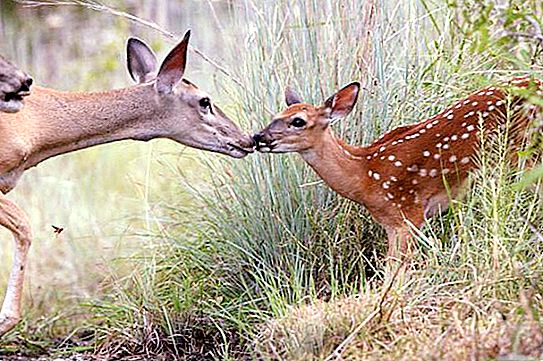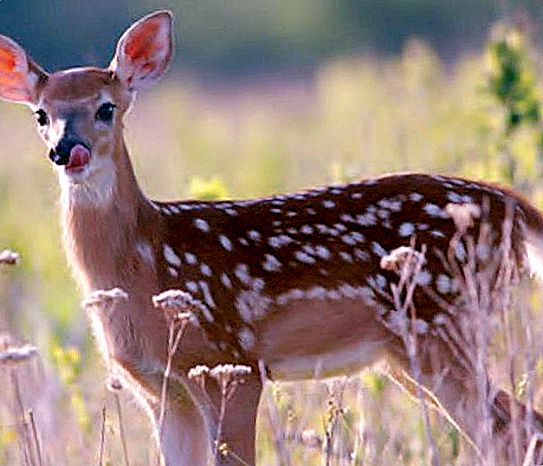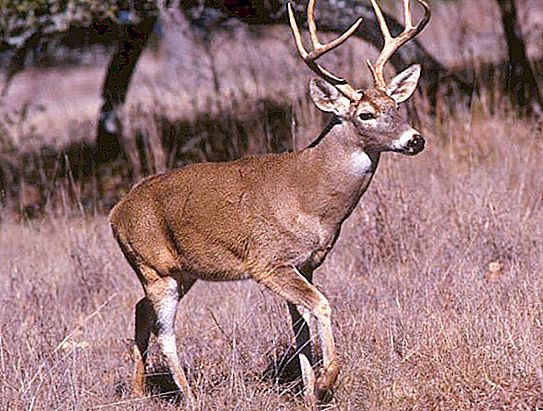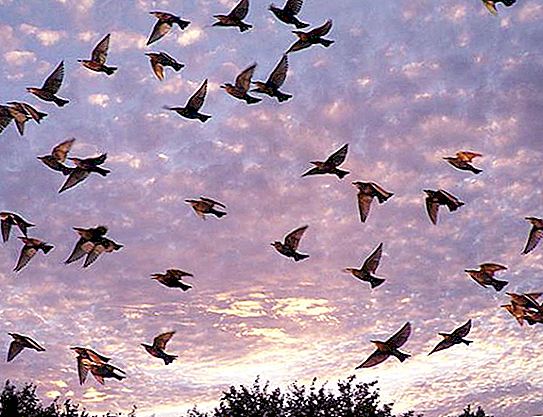Virginia (white tailed) deer is the most common subspecies in North America. Among other representatives of the deer species, this is the largest. The animal is very interesting, worth a closer acquaintance.
Description
In winter, the Virginian deer wears a light gray coat, which becomes reddish and darker on the back by summer. The species got its main name because of its bright white in the lower part of the tail. Having noticed the danger, the white-tailed deer rushes to run, with its tail lifted. Kindred, noticing a racing white spot, also rush to the heels.

The change of horns worn only by males occurs after the mating season. Beautiful, crescent-shaped horns have several processes - an average of 6-7.
The size of the deer is different - it depends on the subspecies.
Males grazing in the very north grow to 1-1.1 meters at the withers and weigh up to 150 kg. Females are slightly smaller and slightly lighter. Animals remaining in the southern parts of the mainland are noticeably smaller. Deer, not exceeding 60 cm at the withers, live on some islands. Their weight is only about 35 kg. Such a small growth is due to island dwarfism. A North American deer lives on average about 10 years.
Habitat
White-tailed deer are found throughout the mainland and even a little further: from the southern borders of Canada to the north of Brazil and Peru. This species is considered one of the most common of those that were able to adapt to different conditions. Herds of these animals can be seen in the forests of New England, in the impenetrable swamps of the Everglades, in the prairies, in the semi-deserts of Arizona and Mexico, inaccessible to humans.
In Brazil, white-tailed deer populated tugai forests, the northern slopes of the Andes and coastal shrub savannas. It is curious that the rainforests did not appeal to animals - they are not there at all. However, in all of South and Central America, white tails are much less common than in North.

The high adaptability of the species has made him a welcome guest in many regions. So, in the middle of the last century, the white-tailed deer in Finland turned out to be exactly according to the introduction program. Later, multiplying, the animals naturally settled throughout Scandinavia. Also, deer were brought to the Czech Republic and Russia. This species is one of seven transported to New Zealand for the development of hunting.
Lifestyle
In general, this animal prefers a solitary lifestyle. However, even in addition to the mating season, heterosexual individuals can form groups, albeit fragile. To mate a male, there are enough scattered females - he does not need to create a harem.
200 days after the mating season, deer are born. Most often, 1-2 babies are born, but sometimes three can appear. The fur of white-tailed deer, like many other species, is covered with white spots.
Food chain
What the deer of this species eats does not distinguish it from other ungulates: leaves, buds, herbs, berries, tree bark.
In natural conditions, there are many people who want to feast on white tail tail meat: cougars, coyotes, wolves, jaguars, bears. In addition, the man considers the white-tailed deer an excellent prey.
The threat
According to experts, about 40 million white-tailed deer lived there before the Europeans settled in North America. The Indians always hunted these animals, but this did not affect the population. The colonists began to kill deer, not only for the extraction of meat, but also for the sake of a beautiful skin, and often just for fun.
Such use of the "resource" led to the fact that by 1900 there were about 500 thousand of them left. From this moment, a restriction on hunting was introduced, but even today the situation is different in different regions of the continent. In some areas, the numbers have almost been restored, while in others, the species is on the verge of extinction. In general, the United States currently has about 14 million individuals.

Some subspecies that formerly inhabited the continent are considered almost completely destroyed and are extinct or almost extinct. The IUCN Red List consists of:
• Reef deer. A resident of the Florida Keys Islands. The smallest subspecies of white-tailed. The shooting in 1945 led to the fact that there were only 26 units left. Measures for the protection and revival of the population have led to the fact that today their number has increased to 300 individuals. But the influx of tourists to the islands makes you worry about the population.
• Colombian white-tailed deer. It was named after the habitat - near the Columbia River (Oregon and Washington). The habitat of this subspecies is almost destroyed by humans, so the number of deer has decreased to 300. To date, the Colombian white-tailed tail is in the least danger, its number has increased to 3000.
In most regions of the United States, deer hunting is permitted. However, one hunter has the right to kill only one individual per season. Nevertheless, the population is declining annually, which seriously worries specialists.






